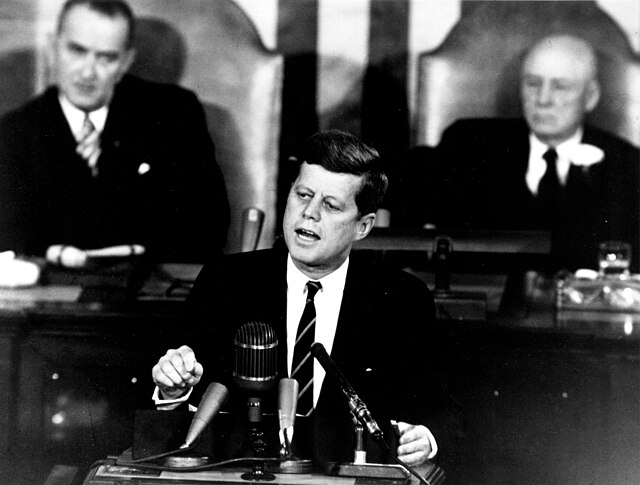Apollo 12 was the sixth crewed flight in the United States Apollo program and the second to land on the Moon. It was launched on November 14, 1969, by NASA from the Kennedy Space Center, Florida. Commander Charles "Pete" Conrad and Lunar Module Pilot Alan L. Bean performed just over one day and seven hours of lunar surface activity while Command Module Pilot Richard F. Gordon remained in lunar orbit.
Commander Pete Conrad studies the Surveyor 3 spacecraft, which had landed two years previously; the Apollo Lunar Module, Intrepid, can be seen at top right.
Left to right: Conrad, Gordon, BeanApollo program← Apollo 11Apollo 13 →
Conrad and Bean rehearse their lunar surface activities before the mission
Conrad and Bean in the LM simulator
The Apollo program, also known as Project Apollo, was the United States human spaceflight program carried out by the National Aeronautics and Space Administration (NASA), which succeeded in preparing and landing the first men on the Moon from 1968 to 1972. It was first conceived in 1960 during President Dwight D. Eisenhower's administration as a three-person spacecraft to follow the one-person Project Mercury, which put the first Americans in space. Apollo was later dedicated to President John F. Kennedy's national goal for the 1960s of "landing a man on the Moon and returning him safely to the Earth" in an address to Congress on May 25, 1961. It was the third US human spaceflight program to fly, preceded by the two-person Project Gemini conceived in 1961 to extend spaceflight capability in support of Apollo.
Buzz Aldrin (pictured) walked on the Moon with Neil Armstrong, on Apollo 11, July 20–21, 1969.
Earthrise, the iconic 1968 image from Apollo 8 taken by astronaut William Anders
President Kennedy delivers his proposal to put a man on the Moon before a joint session of Congress, May 25, 1961.
George Mueller, Wernher von Braun, and Eberhard Rees watch the AS-101 launch from the firing room.








